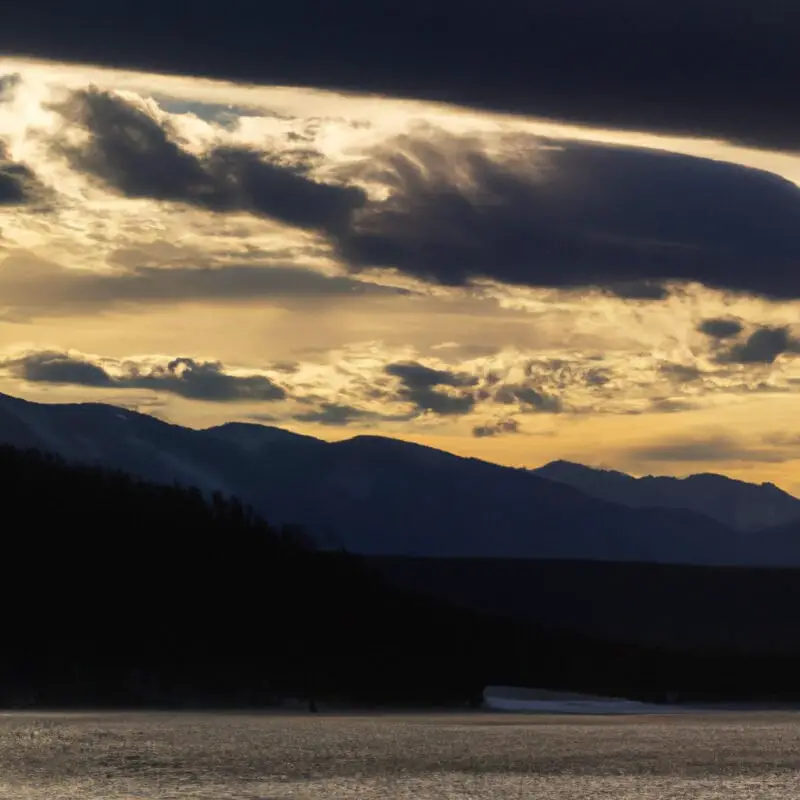As a landscape photographer, I've always been fascinated by the sky's canvas. Clouds aren't just fluffy backdrops; they're dynamic tools that shape my images. In this article, I'll share six ways cloud formations elevate my landscape photography—from diffusing light to adding depth—giving me, and you, the power to capture nature's art with control and creativity.
Whether you're a pro or picking up a camera for the first time, understanding clouds will transform your shots.
Diffusing Natural Light
While capturing the grandeur of landscapes, I've noticed that cloud formations play a crucial role in diffusing the harshness of direct sunlight. This natural diffusion creates a soft, even light that eliminates extreme contrasts and shadows that can ruin a good shot.
I've learned to time my shoots to harness the clouds' potential. Whether I'm aiming for a dramatic effect with storm clouds or a serene ambiance with wispy cirrus streaks, I'm in control. I adjust my position and settings based on the cloud cover to capture the best light. It's a game of anticipation and reaction—clouds shift quickly, and I must be ready.
Mastering this element means I can create powerful, evocative images that resonate with viewers.
Enhancing Colors

I've discovered that certain cloud formations amplify the vibrancy of the landscape's palette, enriching the visual experience in my photography. By mastering the interplay between clouds and light, I can manipulate colors to my advantage, ensuring they pop just the way I envision.
Here's how I approach it:
- Cloud types and color enhancement:
- Cirrus: Thin, wispy clouds that often precede a change in weather, enhancing the warmth of a sunset or sunrise.
- Cumulus: Hefty, white clouds that provide a dynamic contrast, making greens and blues more pronounced.
- Stratus: Layered clouds that can diffuse light evenly, intensifying the saturation of colors.
I strive to use these natural filters to achieve a level of vibrancy that truly captures the essence of a scene.
Creating Dramatic Skies

Cloud formations are a powerful tool I use to infuse my landscape photographs with drama and tension. I'm always on the lookout for the most dynamic skies. Brooding storm clouds or radiant sunbeams breaking through a tumultuous canopy can turn a serene scene into something electrifying. I manipulate these elements to dominate the frame, ensuring they don't just complement the land but actively contribute to the story.
I control the impact by choosing the right moment. It's not just about spotting the perfect formation; it's about anticipating how it will evolve. I position myself where the interplay of light and shadow will be most striking, capturing the precise instant when the sky's mood amplifies the landscape's grandeur, crafting an image that commands attention.
Influencing Shadows

The interplay between cloud formations and sunlight can cast dramatic shadows that enhance the textures and depth of a landscape, shaping the visual narrative of my photographs. I'm always mindful of how these elements can define the mood and dimensionality within my frame.
Here's a structured way I approach shadows:
- Choosing the Right Moment
- Early Morning or Late Afternoon: For long, extending shadows
- Midday: For sharp, contrasting shadows
Manipulating Shadows for Composition
- Direction: Aligning shadows with leading lines
- Size and Shape: Using shadows to create visual interest
Assessing the Quality of Light
- Soft Light: For subtle, muted shadows
- Harsh Light: To emphasize texture and form
Adding Depth

While observing the dynamic array of clouds overhead, I find their varying densities and altitudes add a profound sense of depth to my landscape photographs. The clouds act as natural guides, leading the viewer's eye from the foreground to the distant horizon, creating a layered effect that heightens the impact of the image.
Here's a table that breaks down how different cloud formations can evoke various emotions, giving you control over the mood of your photography:
| Cloud Type | Emotion Evoked | Visual Impact |
|---|---|---|
| Cumulus | Joy, Lightness | Adds Volume |
| Stratus | Calm, Stillness | Enhances Mood |
| Cirrus | Dreaminess | Creates Flow |
| Nimbostratus | Drama, Tension | Adds Weight |
| Cumulonimbus | Power, Majesty | Imposes Scale |
Command your landscape's narrative by skillfully leveraging the clouds to craft compelling depth and emotion in your work.
Dictating Composition

Harnessing the dynamic shapes and patterns of clouds, I meticulously compose my shots to enhance the visual storytelling of the landscape. Cloud formations aren't just backdrops; they're vital composition elements that can dictate the mood and direction of a photograph.
Clouds as Leading Lines:
Draw viewers' eyes into the scene
Guide towards a focal point
Clouds and Symmetry:
Balance compositions with reflections in water
Create harmonious scenes
Clouds as Natural Frames:
Encapsulate subjects within cloud contours
Focus attention on specific landscape features
I leverage these cloud characteristics to assert control over the composition, ensuring each element is purposefully placed to convey my intended narrative. It's about making the sky an active participant in the photograph's composition, not just a passive observer.
